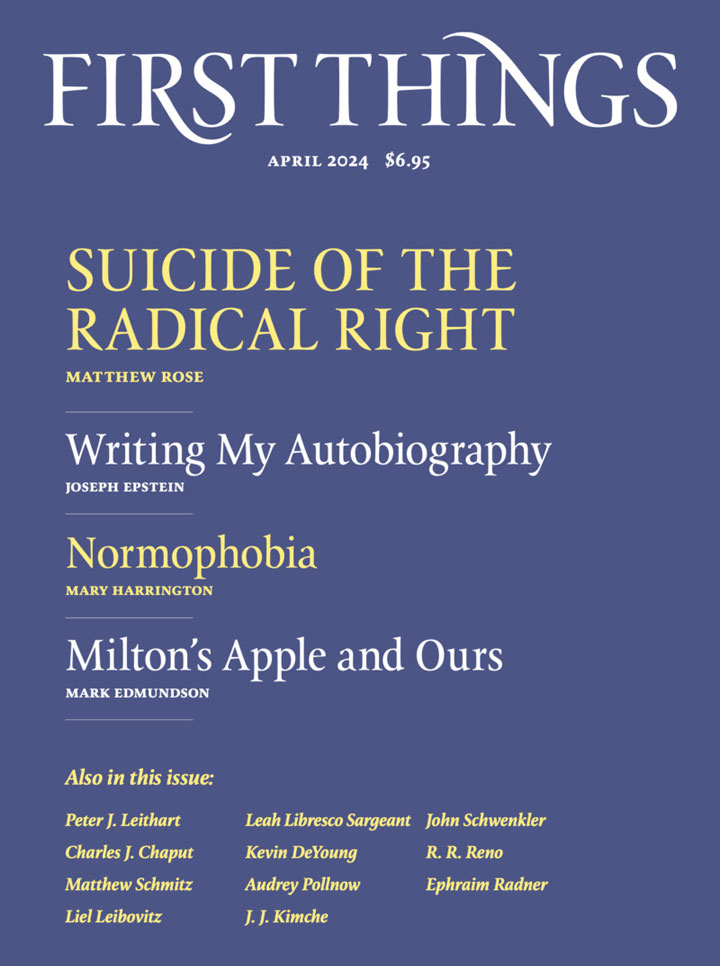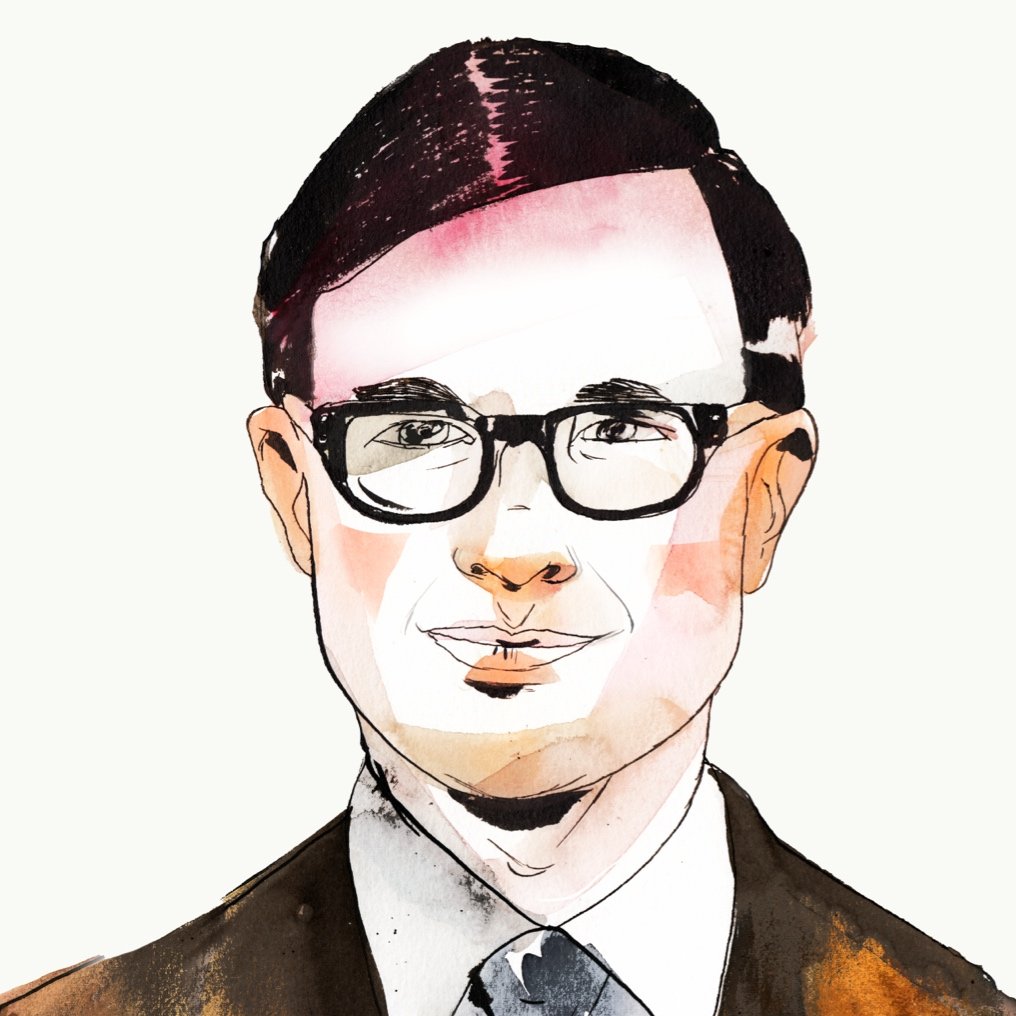Whereas John F. Kennedy encouraged Americans to view his Catholic faith as a private matter, Joe Biden has made his faith a defining element of his public identity. Biden wears a rosary bracelet, casually crosses himself during conversations with foreign dignitaries, and likes to conclude speeches by quoting from the anthem of postconciliar American Catholicism, “On Eagle’s Wings.” In his 2007 memoir, he writes that what he learned from the Catholic Church has “always been the governing force” in his political career.
Biden has famously broken with Catholic teaching on matters such as abortion and same-sex marriage, but his insistence on his Catholic identity deserves to be taken seriously. It reflects the continuing appeal—and persistent failure—of a certain idea of Catholic politics, one that seeks to recapture the achievements of mid-century by placing one foot in left-wing politics and the other in the Catholic faith.
Biden’s invocation of his Catholic identity recalls an earlier period of American history, when white Catholics were stalwarts of the Democratic Party and guarantors of the postwar consensus. In 1960 when Biden was a senior in high school, 82 percent of white Catholics voted for John F. Kennedy. In 1964, 78 percent voted for Lyndon B. Johnson. In 2020, however, almost two-thirds of white Catholics who go to church weekly voted against Biden, their co-religionist, and for Donald Trump. By recalling what the political scientist Ryan Burge has called “the myth of the white Catholic Democrat,” Biden evokes the postwar era to which Americans in various ways seem to be drawn—whether they lament the rise of neoliberalism or the decline of the family.
In this way, Biden’s religious displays reinforce his broader public presentation. He sports an Omega Speedmaster watch, the timepiece worn by the astronauts of the Apollo missions. And he is regularly photographed wearing Ray-Ban Aviators, the sunglasses made famous by the victorious Gen. Douglas MacArthur as he swept across the Pacific. Biden’s age may prove to be an electoral liability, but it has at times functioned as a source of strength, allowing him to associate himself with an older, and seemingly more functional, America.
In policy terms, Biden has sought to revive the notion that government is not necessarily the problem, and can be the solution. Throughout his 2020 campaign, he invoked the legacy of Franklin Roosevelt. In his first address to a joint session of Congress, he declared, “We have to prove democracy still works. That our government still works—and we can deliver for our people.” The idea that government can deliver important public goods is reflected in Biden’s economic policies. He kept in place Trump’s tariffs on China, pursued an aggressive approach to antitrust, and made it easier for workers to unionize. He also pioneered a kind of twenty-first-century progressive industrial policy, in the form of the Inflation Reduction Act, the CHIPS and Science Act, and the Infrastructure Investment and Jobs Act.
Though their merits are open to debate, these initiatives should be seen as a sustained attempt to recover elements of the postwar settlement, guided by the belief that the state can work to advance what Biden has called “the common good, the general welfare, a faith in the United States.” They are one element of a political program that he has sought to associate with the achievements of mid-century: class compromise and victory in World War II, strong unions and the landing on the moon.
Yet those who would celebrate Biden’s economic policies must also weigh his social policies. The broad-based prosperity of the middle part of the twentieth century was made possible not just by government policies but by intact families. Wage gains for workers were enabled not only by union organizing but by tight labor markets, which are hard to maintain in the face of mass migration. On these and related questions, Biden reveals not only his personal limits, but the intractable constraints facing anyone who seeks to reclaim the legacy of the New Deal through the vehicle of today’s left-wing parties.
On both abortion and gay rights, Biden initially attempted to chart a relatively moderate position, while maintaining his good standing in the Democratic Party. But as his political coalition moved left, so did he. In 1982 Biden voted for a constitutional amendment that would allow states to overturn Roe v. Wade. One year later, he voted against the same proposal—a preview of things to come. In 2019, Biden announced his opposition to the Hyde Amendment, a measure barring federal funding of abortions, which he had supported since 1976. He now calls for enacting Roe v. Wade into law.
Similarly, Biden voted for the Defense of Marriage Act in 1996. But in 2012, as vice president, he surprised the White House by endorsing gay marriage. This unexpected move forced Obama to do the same. As president, Biden has promoted gender transitions for children, even as other countries are restricting hormonal therapies and surgeries. His Office for Civil Rights is now attempting to discourage schools from notifying parents when their children undergo gender transition.
On issues of sexuality, Biden has been out of step with his Church’s hierarchy. But he has faithfully reflected their priorities on immigration, championing a humanitarian approach over border enforcement. Even here, however, Biden’s policies undercut the traditions that prevailed in the New Deal era. One can promote collective bargaining all one wants, but it will be hard for workers to gain much leverage when a reserve army of labor is coming over the border.
The political tradition Biden sought to evoke didn’t spring out of the ether. It was formed by the Baltimore Catechism and the ethnic neighborhood. It was toughened by its encounter with anti-Catholic feeling, and it tipped its cap to a hierarchy that hadn’t yet lost its prestige. It was shaped by social, political, and economic conditions that no longer hold. Efforts to channel its appeal will thus inevitably reflect different interests and priorities. They will have a different internal motor, whatever their outward trappings.
In Biden’s telling, the “central lesson” he learned from the Catholic Church and his Catholic schooling was to oppose the “abuse of power” and stand up for victims. As stated, this is a political ideal so vague it could be used to defend the right to life of an unborn child—or a woman’s right to abortion. It can justify a preference for a working-class U.S. citizen—or for the economic migrant. Like the Catholic politics of mid-century, it will be acted on in a way that accords with various social and institutional priorities.
Massimo Faggioli, the Catholic historian, has written that “Biden is not a product of elite Catholic prep schools and even less of Protestant ones, but of the Catholicism that emerged from the cultural ghetto of the twentieth century.” This is a better summary of Biden’s self-presentation than of his biography. Biden has made much of his affinity for his mother’s Irish Catholic family in Scranton, but he was raised in a suburban setting, and Biden is an English name. He was educated at Archmere, an exclusive Catholic prep school.
“You’ve got to be a college man,” Biden’s father used to repeat to him. “You’ve got to be a college man.” Biden’s father, who came from a privileged background, was expressing regret at his own lack of a degree. But he was also giving invaluable counsel to a man who hoped to make his career in the Democratic Party. Today, colleges, not white ethnic communities, are the most formidable redoubts of Democratic power. And as other Catholic institutions have waned, Catholic colleges have enjoyed ever greater independence in articulating their own version of the faith. This faith is therapeutic rather than dogmatic, and it is determined to remain on good terms with the political coalition gathered behind the Democratic Party. This collegiate Catholicism—not the Catholicism of the ethnic neighborhood—informs Joe Biden’s politics.
It will be hard for anyone—left, right, or center—to advance a Catholic politics without a Catholic culture, but the task is particularly difficult on the left. Politicians, pundits, and some upstart institutions on the right have challenged conservative economic orthodoxies, often by invoking the virtues of the postwar settlement. But on issues like abortion and sexuality, the left tolerates no such dissent.
People remain drawn to the idea of the Catholic Democrat, as they are to other symbols of America’s triumphant past. But just as the quintessentially American Aviator is no longer made in the United States, and the vaunted “moonwatch” now has a cheaper, less complicated movement than the watches the astronauts wore in space, so the reality behind the Catholic Democrat has changed. Joe Biden is far from the only person to find something admirable in the achievements of the American mid-century. But his career shows that appeals to that age can conceal a very different politics.


